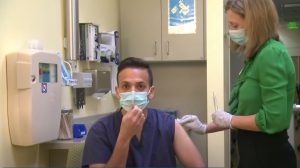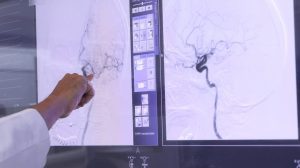NEW YORK (Reuters Health) – The distress of multiple venipunctures in hospitalized pediatric patients can be avoided by obtaining blood samples through a peripheral venous catheter placed for IV fluid administration. The technique provides reliable results, except for glucose measurements, an Israeli team reports.
They note in their paper in the July issue of Pediatrics that blood samples obtained in adults through peripheral venous catheters (PVCs) have demonstrated good reliability but the approach has not been tested in children.
To investigate, Dr. Ilan Erez at Meir Medical Center, Kfar Saba, and colleagues compared blood samples obtained by venipuncture to those obtained through an existing PVC in 47 hospitalized children.
The PVC sampling technique involved stopping IV fluid administration for 30 seconds and applying a tourniquet proximally for another 30 seconds. “A 2-mL syringe was then attached, and 2 mL of blood was obtained and discarded. Then blood was drawn slowly (~15 seconds) into a different 2-mL syringe, to allow a gentle pumping action that might reduce vacuum in the syringe and thus reduce hemolysis rates.”
Adequate samples were obtained via the catheter from 40 of the children. No undue hemolysis was seen regardless of catheter gauge size.
When compared to the venipuncture sample, only 21 of 348 paired samples (6%) were discordant on measures of basic complete-blood-count indices and chemical indices. Eight of these aberrations were due to glucose measurements. In nine instances, the discordance was clinically significant, but none would have changed clinical management.
The team found that sampling via the venous catheter took significantly less time on average (104.5 seconds) than did venipuncture (175.8 seconds).
In 14 cases, blood samples were obtained during surgery. Among the other 26 children who were conscious during the procedures, none exhibited distress and crying during catheter sampling but 19 did so during venipuncture.
“Considering the physical and emotional distress accompanying repeated venipuncture, blood sampling from PVCs might lessen distress and its consequences significantly,” the authors conclude in their report.
That’s beneficial not only to the patients, they say, but also to families and to medical staff, in terms of efficient time management.
Reference:
Pediatrics 2010;126, e179-e186.




